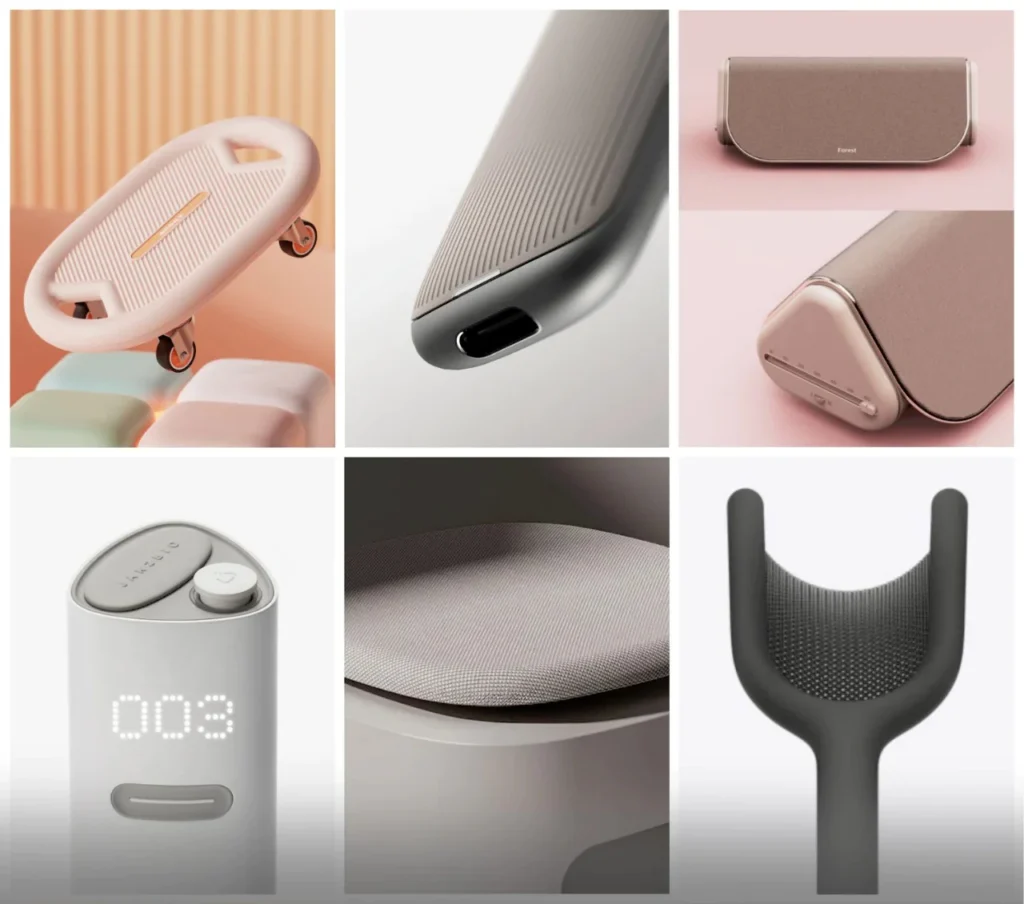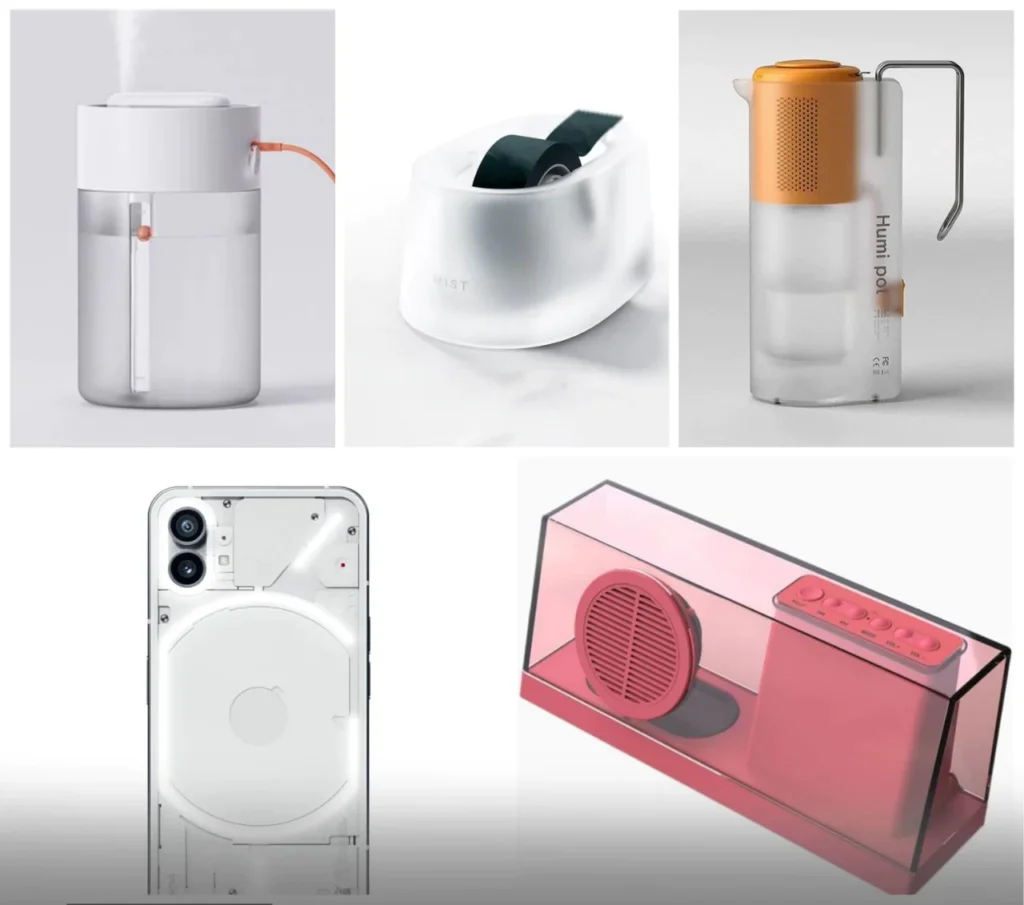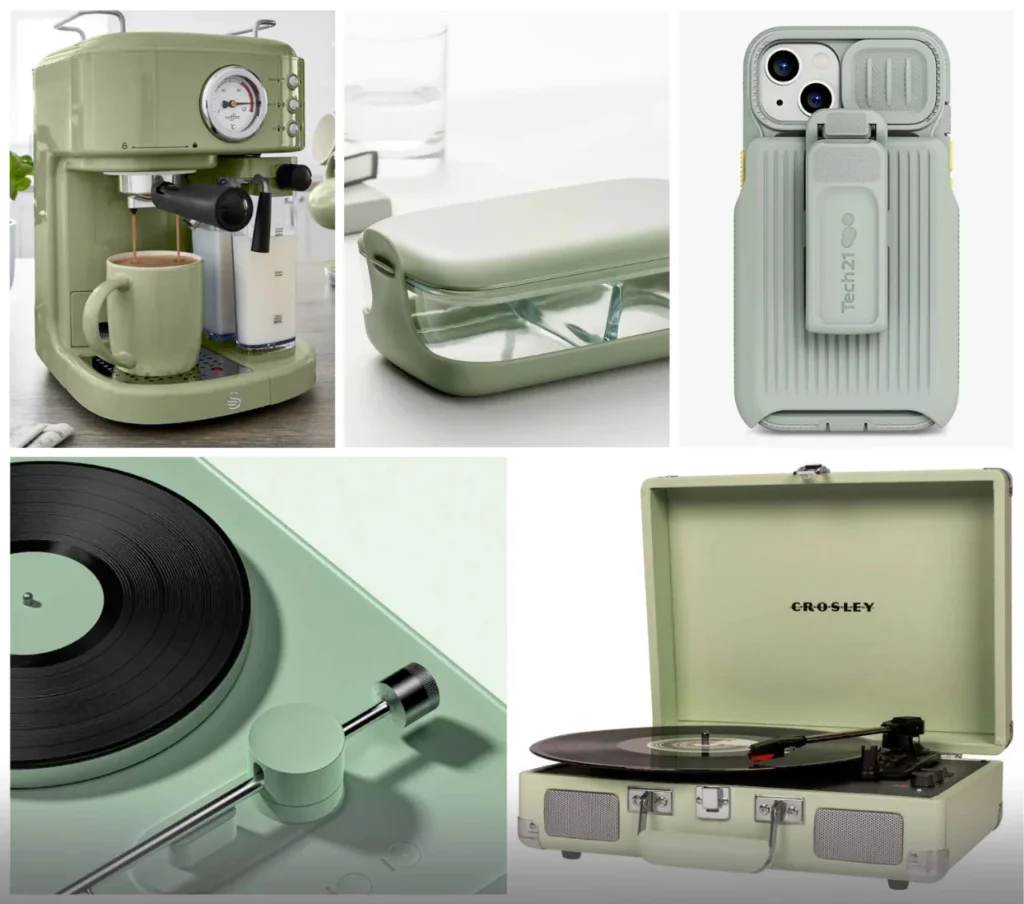製品構造設計とは、以下のような製品の物理的側面を設計するプロセスを指す。 デジタル機器 そして 家電製品外見が概念化された後に。
"製品構造設計 "の定義をどう理解するか
このデザイン・フェーズは、次の段階とのギャップを埋めるものである。 美的デザイン そして 製造工程.例えば、電動エッグビーターの場合、形や色など外観のデザインが決まったら、次は構造設計。

これには、3Dモデリングを使ってモーター、回路、スイッチなどの内部部品を設計に組み込むことも含まれる。このプロセスは、外殻をパーツに分割することにも及ぶ、 射出成形用金型の作成また、シェル部品と内部部品との互換性や固定性を確保する。また、製造工程や組み立て要件を考慮し、製品の見えない部分を設計することも含まれます。
最後に、シェルは 射出成形 電動エッグビーターが完成する。


製品構造設計は、設計と実践的な製造を結びつける総合的な分野である。、生計を生を生を生れて生れて生の生計の生って生生を生の生。生計の生は生、生計の生を生生生生生生生生生生生生生生生生生生生生生生生生生生生生
製品構造エンジニアになる基礎知識とトレーニング
製品構造エンジニアになるためには、一定の基礎知識から始めなければならない。このセクションでは、初心者がジュニア構造エンジニアになるために必要な基礎知識を取り上げますが、追加的な知識を持つことは常に有益です。
1.機械製図
製品構造設計の基本的な要件のひとつは、次のとおりである。 機械製図大学在学中に学ぶことが多い。必要なスキルは基本的なものであり 手描き 製図基準で使用される様々な線の太さに関する能力または理解。
しかし、正投影図、側面図、第1角度と第3角度の基本概念を理解することは不可欠である。図面から部品の寸法や主な特徴を解釈できることは非常に重要です。これらのスキルは、製品構造設計の基礎となります。
通常、工業デザインや機械工学を専攻する学生は、大学でこの科目を学ぶ。その時によく理解できなかった場合は、複数の投影図が部品の形状をどのように表現しているかに焦点を当てながら、教科書を再確認することをお勧めする。
機械製図が製品構造設計の基礎となるのには、2つの理由がある。
まず、構造設計に使用される3Dソフトは、それが以下のようなものであろうとなかろうと、同じである。 クレオ, ソリッドワークス, グルタミン酸ナトリウム, キャティアあるいは フュージョン360このソフトは、パラメトリック・デザインの原則に基づいて動作し、2Dスケッチを3Dモデルに変換します。機械製図を理解していないと、これらのソフトウェア・プログラムを習得するのは難しい。
第二に、構造設計では、部品図や仕様書など数多くの2D図面を解釈して3Dモデルを作成することが多い。機械製図の基本的な理解がなければ、製品の構造設計を学ぶことは不可能だ。
寸法公差
寸法公差については、最も基本的なレベルでは、はめあいシステムや公差ゾーンのような複雑な概念を理解する必要はありません。しかし、基本寸法に続く小さな数字の意味を知ることは極めて重要です。
寸法公差は、最終製品で部品が正しく組み合わされるために非常に重要です。初心者のレベルでは、高度な公差システムを深く理解する必要はありませんが、主な寸法に続く数字の意味を知ることは不可欠です。これらの数値は、部品の寸法に許容されるばらつきを示しており、最終的なアセンブリにおける互換性と機能性を確保するために非常に重要です。
2.ソフトウェア学習
機械製図の基本を押さえたら、次はCAD(コンピュータ支援設計)ソフトに慣れることです。この段階では、ショートカットや複雑な操作を覚えるのではなく、図面の開き方や修正方法、線や寸法の追加などを理解することが大切です。この知識は、後に3Dソフトウェアを学ぶための基礎となり、3D部品の図面を2D製造ファイルに変換することを可能にし、最近習得した機械製図のスキルを強化します。
製品構造設計の実務において、純粋な2D製図は一般的ではなくなりつつあることに留意する必要がある。しかし、これは製品構造エンジニアになるための基礎であり、必要なスキルのすべてではないことを忘れないでください。
現代の製品構造設計では、3Dソフトウェアの熟練は譲れません。2D製図や手描き製図の腕前を懐かしむベテランエンジニアに振り回されてはいけません。エンジニアリングとは、職人技だけでなく、常に知識と技術を更新し続けることなのです。製品構造設計における3Dソフトウェアによる効率向上は大きく、従来の手作業による製図スキルでは太刀打ちできません。製品構造エンジニアは、常に新しい知識を学び、適応していく姿勢が求められます。
正しい3Dソフトウェアの選択
3Dソフトウェアの選択は、参入する業界によって異なります。例えば、航空宇宙産業や自動車産業では、UGを好むユーザーもいるにもかかわらず、CATIAを好むことが多い。これらの業界では、CATIAを知らないと不利になることがあります。UGは、その堅牢な機能により、金型業界や製造業界で広く使用されています。家電製品およびデジタル製品設計分野で優位を占めるCREOは、台湾企業がいち早く採用したことで人気を博している。ソリッドワークスは、最適化された機能により、機械設計、特にオートメーションに優れている。SpaceclaimやFusion 360のような新しいソフトウェアも検討する価値がある。
ひとつのソフトに満足しないことが重要だ。異なるソフトウェアにはそれぞれの強みがあり、絶えず進化し、互いに機能を拝借し合っています。自分が学んだソフトウェアが優れていると思い込むことは、デザイナーとしての成長を妨げ、陳腐化を招く恐れがあります。オープンなマインドセットと継続的な学習が鍵となります。
ソフトウェアの学習リソース
自分のキャリア・パスに合ったソフトウェアを選んだら、教科書やオンライン・ビデオなど、学習に利用できるリソースは数多くある。オンラインや書店に豊富な教材があるため、独学も現実的な選択肢となる。
ソフトウェアのコマンドをマスターしても、製品構造設計を効果的に行えない人は多い。なぜなら、ソフトウェアは単なるツールに過ぎず、製品構造設計の本質はその背後にある知識にあるからだ。デザインの原理、プロセス、複雑さを理解することこそが、この分野で真に秀でることを可能にするのだ。
3.業界製品に関する知識
構造設計の文脈で工業製品について語るとき、私たちは人々が日常生活で使用する具体的な商品を指す。これには、携帯電話、自動車、トイレから歯ブラシやマッサージ機まで、あらゆるものが含まれる。基本的に、ユーザーのニーズを満たす、あるいは特定の機能を果たす物理的な物体はすべて、このカテゴリーに入る。
最も単純な製品は、ステンレス製のスプーンのように、単一の材料から作られ、特定の形状と機能を持つかもしれない。しかし、より複雑な製品は、外殻と様々な内部部品で構成されている。トイレブラシであれロケットであれ、原理は同じである。外殻と内部部品の組み合わせであり、内部部品の数によって複雑さが変わる。
これを理解することで、製品の構造設計の役割が明確になる。外殻をどのように組み立てるか、内部の部品をどのように統合し固定するか、そして、これらの部品がどのように所望の機能を発揮するようにするか。
インターネットで知識を深める
理解を深めるために、一般的な製品の分解図を調べ、分析することを検討してください。そうすることで、製品の外殻や内部部品に関する概念の把握が深まります。
製品の外殻と内部部品に関する知識は、製品構造設計の重要な側面です。製品の種類にはそれぞれ固有の特徴と課題があります。幅広い学習視点を持ち、ひとつの製品タイプに偏りすぎないようにすることが大切です。各カテゴリーのエッセンスを把握し、継続的に学習することが大切です。
内部コンポーネント
単一機能で内部部品がないものを除き、ほとんどの製品には、電力用モーター、熱エネルギー用発熱体、インタラクション用ディスプレイ、操作ボタン、回路基板、スイッチ、コネクター、ダンパー、シール、エネルギー貯蔵ユニットなどの中核部品が含まれている。これらの部品は、それ自体が製品であり、それ自体がサブ部品である。
例えば、モーターにはコイル、カーボンブラシ、マグネット、シャフト、ブッシュなどがある。これらの部品が接続されると、回路基板と炊飯器のソケットに接続された加熱プレートのように、特定の機能を果たす。
製品によっては、多くの可動部を持つ複雑な内部機構を持ち、リンケージやカム機構などの知識を必要とするものもある。このような設計は、機械エンジニアやオートメーション・エンジニアが担当することが多い。また、小型家電のように可動部分が少なく、構造設計に重点を置く製品もあります。
さまざまな製品の内部部品は膨大であり、一人の人間がそのすべてを知ることはできない。この多様性が、異なる分野が区別されて見える理由だ。例えば、スマートフォンの設計に精通したエンジニアは、炊飯器の発熱体には詳しくないかもしれない。
内部部品に関する知識は、時間をかけて蓄積されるものです。日常生活で遭遇するさまざまな部品について観察し、好奇心を持つことは、製品構造設計の理解と専門性を大幅に高めることができます。
製品構造設計におけるシェル
製品の構造設計において、製品外殻の設計には様々な製造工程や表面処理工程が含まれる。材料の選択とそれに対応する加工技術は、製品の外観と機能性を形成する上で極めて重要です。
製品の外殻は様々な素材から作られており、それぞれ異なる加工方法が必要とされる。プラスチックのような同じ素材であっても、製品のサイズ、形状、その他の要件によって加工技術は異なります。一般的なプラスチックの加工方法には、射出成形、真空成形、ブロー成形、回転成形、エナメル加工などがある。
製品デザインにおけるプラスチック
製品外殻の最も一般的な材料は、プラスチックと金属である。、、、、、、ー プラスチックではー ABS、ー PCー PPー PEー ASー POMーTPEなどー各素材にはそれぞれ特性、成形条件、識別方法があります。
製品デザインにおける金属
製品シェルに使用される金属も、アルミニウム、ステンレス鋼、亜鉛メッキ鉄、冷間圧延鋼など多種多様である。これらはアルミニウム、銅、鉄に大別されるが、産業の発展により、グレードや種類は多種多様になった。
例えば、アルミニウムの等級は、異なるプロセスに適しています:6063は 突出部ADC12はアルミダイカスト用、7000系合金は航空機や宇宙船によく使われ、1145は食品包装のアルミ箔に適している。これらのニュアンスを理解することは、効果的な製品構造設計に不可欠です。
製品の構造設計には、材料とその適切な用途を深く理解することが不可欠です。定期的に情報を収集し、さまざまな材料とその用途について観察することで、効果的で機能的な製品構造を設計する能力が大幅に向上します。
4.様々なプロセスに関する知識
射出成形
射出成形は、特に家電製品の設計において、プラスチック部品の最も一般的なプロセスである。簡単に言えば、射出成形はプラスチックを溶かして液状にし、金属の空洞に流し込む。冷却すると、プラスチックはキャビティの形状に固化します。射出成形を理解するには、プラスチックの溶融(プラスチックの物理的特性を理解する)、金属キャビティでの成形(成形中のプラスチックの特性を知る)、キャビティからのプラスチック部品の排出(金型の基本を理解する)という3つの重要な分野の知識が必要です。
製品の構造設計に関する最も重要な点は、部品の排出である。プラスチック部品を取り出すには、金属キャビティ(金型)が開いて2つに分離できなければならない。冷却されたプラスチック部品の形状がキャビティにはまり込んでしまうと、取り出すことができません。したがって、この問題を防ぐためには、プラスチック部品の形状と金型のパーティングラインの角度が90度以下でなければならない。
金型の設計には、部品の取り外しを容易にするための可動部を含めることができる。例えば、プラスチックのボウルは、まずそれを保持する外側の金属層を動かすことで取り外すことができます。このような金型の可動部分は、次のように知られている。 スライダー または リフターは、プラスチック部品の設計をより柔軟にする。しかし、金型コストと複雑さを増大させる可能性があるため、その使用は最小限にとどめるべきである。
その他のプラスチック加工技術
などのテクニックもある。 ブロー成形, 瀬戸引きそして 回転成形 それぞれ独自のプロセスを持ち、製品の構造設計に影響を与えます。設計能力と選択肢を広げるために、これらの異なる技術を理解することは有益です。
5.製品構造工学における組立設計
様々な製品の基本構造とその成形工程を理解した後、次に重要なのは製品の組立設計である。これは製品の構造設計の重要な要素であり、製品の外殻の中に内部部品を論理的に配置し、確実に取り付けることに関わる。
内部部品アセンブリ
について 内部コンポーネントの組み立て 効果的に機能させるためには、正確に配置し、しっかりと固定する必要があります。製品の構造設計では、部品の位置決め、固定、保護、機能性の確保といった側面を考慮します。これらの検討には全体的なアプローチが必要であり、設計プロセス中に再検討が必要になることも多い。
部品の位置決め
をデザインする 各パーツの正確な位置 製品内での位置決めは非常に重要である。これには、3次元での空間位置を決定し、位置決め方法が実用的で効果的であることを確認することが含まれます。特に部品の製造公差を考慮した過剰な位置決めや位置決めの困難さは、一般的な課題です。経験豊富なエンジニアであっても、製造時に達成可能な精度を考慮せずに穴の位置決めに頼るなど、この分野では間違いを犯す可能性があります。ここでは、機械設計コースで扱われる自由度の概念を理解することが不可欠です。
内部コンポーネントの保護
位置決め用部品と固定用部品の区別は極めて重要である。特に高精度が要求される場合は、位置決めと固定の両方に同じ構造的特徴を使用することは避ける。位置決めには精度が要求され、固定には強度が要求されます。例えば、位置決めにネジの支柱を使用することは、低精度の場合には有効かもしれませんが、高精度が要求される場合には、より厳しい公差を持つ専用の位置決め支柱が必要であり、ネジは部品を固定するためだけのものです。
部品を固定する一般的な方法には次のようなものがある。 ハメ, 接着, 溶接, リベッティングそして時には スナップフィット機構しかし、後者は衝撃に対する効果が劣る可能性がある。課題は十分な強度を確保することであり、既存の設計から学ぶことは非常に有益である。さらに、大学レベルの力学、材料科学、有限要素解析を見直すことも重要である。落下試験のようなシナリオをモデル化できる最新のシミュレーション・ソフトウェアは、若いエンジニアにとって、従来の経験に基づく方法を凌駕するための貴重なツールである。
スナップ・フィット、スクリュー・ポスト、超音波溶接、リベット接合、接着剤接合に関する具体的な詳細については、専門の資料を参照されたい。有限要素解析ソフトウェアを習得し、最新の製造能力を常に更新することの重要性を強調することは重要である。新しい技術や方法に適応することなく、設計経験だけに頼っていると、この急速に進化する分野ではすぐに陳腐化してしまう。
6.製品構造設計における部品の保護
製品の構造設計において、内部部品の保護は極めて重要な焦点です。さまざまな条件下で使用されるさまざまな製品では、その内部部品に特定の保護が要求されます。最も一般的な要件は強度で、落下や輸送中など、通常または極端な条件下でも部品が外れたり壊れたりしないことが不可欠です。構造設計は、通常の使用に対する耐久性と極端な状況に対する回復力を確保しなければならない。製品によって品質基準が異なるため、要求される強度も異なります。
一般的な保護ニーズには、クッション性や衝撃吸収性(モーターなど)、断熱性、防塵性、防水性などがあります。これらの対策は、製品の寿命を延ばし、確実に動作させるために不可欠である。具体的な学習内容は、特定の製品やその部品に合わせて調整する必要がある。
防水・防塵
防水と防塵は、多くの場合、以下のように指定される。 IP(侵入保護)等級IP65は、完全な防塵と噴流水に対する保護を示します。これを達成するために、製品の構造設計には一般的に、シリコーン・シーリング・リング、ポッティング・コンパウンド、防雨のための設計アングルが組み込まれている。
熱保護
内部部品の熱保護は、製品の構造設計におけるもう一つの重要な考慮事項である。発熱体、モーター、回路基板などの部品は、動作中にかなりの熱を発生する。この熱が適切に放散されないと、部品が損傷する可能性があります。
一般的なソリューションには、冷却ファン、ヒートシンク、熱伝導性シリコン、グラフェンベースの放熱材料の追加などがあります。熱解析の知識とソフトウェアは、特定のヒートシンクが製品コンポーネントの冷却要件を満たすことができるかどうかを計算するために使用されます。熱伝導、対流、比熱容量など、高校の物理で習うような原理が関係するが、製品設計に実用するには専門的な知識が必要だ。
製品や部品が異なれば、構造設計に求められる保護戦略も異なります。製品構造設計者として、幅広い経験を積み重ねることは不可欠です。ある製品カテゴリーで成功した設計から学び、その洞察を他の製品に応用することで、あなたの設計スキルを業界の同業者よりも高めることができます。
7.機能的実装
製品の構造設計において、部品の機能的な実装を考慮することは、設計プロセスの専門的で詳細な側面である。
例えば、電子機器では、スピーカーの基本的な機能として、音を通すための開口部を作ることが挙げられます。より高度な理解には、スピーカーとケーシングの間にシーリング・フォームを追加してフロント・サウンド・チャンバーを形成することや、音孔の面積をスピーカーの仕様に適合させて最適な音の伝送を確保することなどが含まれます。
ハイレベルな設計では、密閉されたリア・サウンド・チャンバーの作成が考慮され、容積と形状がスピーカーの音響要件を満たすように特別に設計され、優れた音質のために最適なf0と音の周波数カーブが確保されます。設計のこの側面は、しばしば部外者には見えませんが、重要な作業と詳細を伴います。この分野を学ぶには、各機能部品を深く掘り下げ、理解し、設計し、テストし、改善する必要があります。
動きと空間のデザイン
機能的な実装に共通するもう一つの側面は、動きとスペースを考慮した設計である。例えば、モーターでリンク機構を駆動する場合、構造設計はリンクの動きのメカニズムを考慮し、その動作に十分なスペースを確保しなければならない。多くの製品はコンパクト化を目指しているため、内部のスペースは限られていることが多い。適切なクリアランスを決定し、機能部品の種類ごとに最低限必要なスペースを理解することは非常に重要であり、経験を積むことで得られるものです。
デザインにおける業界の壁を乗り越える
内部コンポーネントの保護とその機能性の実現に関する知識は、製品構造設計のさまざまな産業分野において、しばしば参入の主な障壁を形成する。しかし、これらの課題は決して乗り越えられないものではない。各コンポーネントを安全かつ効果的に使用する方法を理解し、統一された思考プロセスに従い、不慣れな分野の知識を補うことが必要なのだ。こうした知識の多くは、業界特有の経験値に集約されている。
根底にある理論的な根拠は複雑である可能性があるが、実際には、こうした経験的価値を理解することが、迅速かつ効果的な製品構造設計につながる。一見複雑に見える理論に怯まないことが重要である。製品構造設計者の多才さと能力を信じることが、この分野で成功する鍵である。
製品構造設計における経験と継続的学習の役割
これまでの製品構造設計に関する議論は、経験値の重要性を浮き彫りにしている。製品構造設計は、ソフトウェアをマスターし、基本的な製品コンセプトを理解し、設計経験値にアクセスすれば十分だと思われるかもしれません。これは真実でもあり、真実ではありません。多くの若手製品構造設計者は、確かにこのような方法で設計を始めます。しかし、これらの経験値の正しい解釈と適用には、より深い内面化と理解が必要です。成功の原則を知っていながら、それを効果的に適用できないというのは、よくある落とし穴です。
最新の知識と技術の必要性
製品の構造設計において、外観モデルを再構築する際には、製造工程に関する知識が極めて重要である。例えば、デザインが成形可能かどうかを理解し、それを最適化する方法を理解することは不可欠です。この知識は常に更新され、洗練される必要があります。予備的な構造設計では、組立や部品生産をいかに容易にするか、生産効率をいかに向上させるか、組立関連の問題をいかに理解するか、などが考慮される。これらの点についても、継続的な学習と更新が必要である。
製品の構造設計を改良する際、部外者にとっては些細に思えるような微調整が重要な意味を持つことがあります。スナップフィットの適切なかみ合わせの量、部品間の適切なクリアランス、射出成形におけるリブの最適寸法などの決定は、すべて深い理解に基づいています。この理解は、方法と理由の両方を包含する徹底したものでなければなりません。
モトローラのデザイン・ガイドライン
例えば、モトローラの設計マニュアルでは、レンズ(透明窓パネル)と周囲のシェルとの間に0.075mmのギャップを設けることを提案している。若手の設計者ならこのガイドラインに従うだけかもしれないが、経験豊富な設計者ならもっと深く掘り下げるだろう。
この具体的な値は、射出成形シェルのCPK値やレンズカットの精度に関係する。統計的な公差を理解する必要があり、継続的な知識の更新が必要です。小規模な工場では、モトローラのサプライヤーシステムとはCPK値が異なるため、0.075mmのギャップは適切ではないかもしれません。このようなニュアンスの違いを認識することが、異なる環境や業界に問題なく適応できるマスターデザイナーの特徴なのです。
製品の構造設計で卓越するためには、継続的な学習とスキルのアップデートが必要です。このアプローチによって、場所や業界が変わっても、デザイナーが多才で効果的であり続けることができる。単にルールを知るだけでなく、その根底にある理由を理解し、異なる文脈に適応させることが重要なのだ。
その他の知識
ソフトウェアをマスターし、原理を理解し、製品構造設計の経験を積むことは、ほんの始まりに過ぎません。製品構造設計者の役割は、それだけではありません。
コンポーネントに関する知識
まず、構造設計者はさまざまな部品についての知識が必要だ。多くの製品は、内部部品の選定から始まり、それらを効果的に配置し、外観をデザインするというように、内側から外側へと設計される。そのためには、適切な部材を選択し、機能的・意匠的にデザインしやすい位置に配置する必要がある。
この仕事には、これらのコンポーネントの動作原理を理解し、工業デザイナーやハードウェアエンジニアと協力して、機能的要件と美的要件の両方を満たすことが含まれます。この作業が複雑なため、スタック・エンジニアやプロダクト・アーキテクトのような、ハードウェアの知識とともに、製品思考、構造思考、デザイン美学を融合させた専門的な役割が登場している。
工場見学と製造工程の理解
製品構造設計者は、金型工場や生産ラインなど、さまざまな製造・組立施設にも足を運ばなければならない。さまざまな製造・組立工程で、さまざまな設計がどのように機能するかを理解することは非常に重要です。
この知識により、設計者は製造可能なように設計を最適化し、部品加工の歩留まりと組立効率を向上させることができます。構造エンジニアは、製造ラインのセットアップと製品理解のためのガイドとなる初期組立指示書の作成を担当します。
さらに、製品構造設計者は、製品全体の部品表(BOM)を整理し、金型メーカー、板金工場、プレス工場、シリコン工場など、さまざまなサプライヤーに対応する製造図面を配布する責任を負う。
各パーツが正しく生産され、品質基準を満たすように、これらのサプライヤーと調整することは、この仕事の重要な部分です。アセンブリ互換性のための許容公差や表面の平坦さに関する決定は非常に重要であり、設計者の権限に属します。作業量が多いため、モールド・エンジニアのような専門職は、これらの特定の作業を処理するために開発されました。
製品構造設計者の継続的な責任
製品構造設計者の仕事は、設計の完了と製品の最初の組み立てで終わるわけではない。実際には、品質保証と規格への準拠に焦点を当てた、新たな、そしてしばしば長い段階が始まる。
製品が市場に出回るまでには、国内では3C規格、輸出ではFDAやCE規格など、さまざまな品質チェックや認証に合格しなければなりません。設計者の役割には、これらの規格に適合するよう事前に調査し、テスト後に問題を分析し、すべての要件を満たすまで設計を繰り返すことが含まれる。この組み立て、テスト、問題解決、再テストのサイクルは、製品が量産体制に入るまで続く。
製品が量産体制に入ったとしても、構造設計者の仕事は終わりません。すべての部品が必要な基準を満たしていることを確認し、その仕様を各サプライヤーに伝えなければなりません。これには、許容公差を定義し、量産中の品質問題に対処するための追跡可能な文書を作成することが含まれる。問題が発生した場合、設計者は即時的および長期的な解決策を考案しなければならず、事実上 "製品の管理人 "として機能する。
再録製品構造設計における知識と相互作用
製品構造設計に必要な基礎知識を振り返ってみると、設計原理、ソフトウェア、部品知識、製造工程、組立技術、品質基準、問題解決ロジックをしっかりと理解することが不可欠であることは明らかだ。
この職務では、さまざまな専門家との交流が絶えません。製品構造デザイナーは、製品プランナー、工業デザイナー、ハードウェアエンジニア、サプライヤー、生産ラインスタッフ、品質管理担当者、テスター、プロジェクトマネージャーと協力します。
美学、ハードウェア、製品企画、さまざまなサプライヤーや組立工場との調整、品質基準の知識、試験方法への精通など、包括的な理解が必要である。問題を特定し解決する能力は、この多面的な役割において極めて重要である。
結論製品構造デザイナーの多彩なキャリアパス
製品構造デザイナーは、製品のライフサイクルのほぼすべての段階に複雑に関与する。その役割は初期設計段階にとどまらず、製品を市場に送り出す全過程に及ぶ。このような包括的な関わりを持つことで、独自のスキルと知識を身につけ、キャリアパスにおいて高い適応性と汎用性を発揮することができるのです。
キャリア転換の可能性
の様々な側面を理解し、豊富な経験を持っている。 製品開発製品構造デザイナーは、元の分野内外でキャリア転換の機会を得ることが多い。一般的なキャリア転換には次のようなものがあります:
- 商品企画: デザイン・プロセスに深く関わることで、新製品を効果的に戦略化し、企画するスキルを身につけることができる。
- 調達と資源開発: サプライヤーの力学や製造プロセスを理解することで、調達や資源管理の役割を担うことができる。
- 品質計画: 品質基準と試験手順の知識は、品質保証と品質管理のキャリアへの道を開くことができる。
- 工場経営: 生産ラインや製造工程と頻繁に接することで、工場管理の役割を担うこともある。
- プロジェクト管理: 構想から生産まで、製品開発サイクル全体を経験することで、プロジェクト・マネジメントの役割に適している。
移行があまり一般的でない唯一の分野は、工業デザインとハードウェア・エンジニアリングであり、これらの分野では、製品構造デザイナーの焦点とはならない専門的なスキルが要求される。
チャンスに満ちた世界
要約すると、製品構造設計者のキャリアは、幅広い知識と深い経験によって特徴付けられ、専門家としての成長と転換のための数多くの道が開かれる。設計から生産、品質保証に至るまで、製品のライフサイクルを包括的に理解しているため、業界を問わずさまざまな職務で貴重な人材となる。










